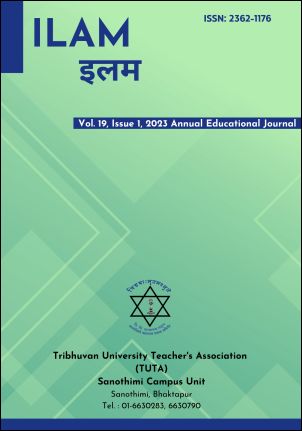Health and Sanitation Condition of Pregnant Women: A Case of Arghakhanchi District
DOI:
https://doi.org/10.3126/ilam.v19i1.58596Keywords:
Health, Hygiene, Pregnant Women, SanitationAbstract
This paper aims to explore the situation of sanitation and changing the behaviour of married Nepalese women of reproductive age (15-49). A concurrent mixed-method (qual-quan) research design was employed in this research under the pragmatism worldview. The data are collected through a questionnaire survey, in-depth interviews, and a transect walk. Arghakhanchi district was selected purposively in this study. Diffusion of innovation theory was applied to understand the factors influencing sanitation and hygiene behavior change. The key research participants were the pregnant women of reproductive age (15-45) in the study. A thematic framework was used to analyze qualitative data, while bivariate analysis was performed to show the association between the background variables of sanitation and the health condition of pregnant women. It was found that most of the women used soap and water for hand washing before each meal and after the toilet. There is the provision of soap at hand washing stations and toilets among the study population. However, sufficient hand washing and toilet facilities were not available and 23% of the women reported being scratchy with the use of soap and water regularly.




